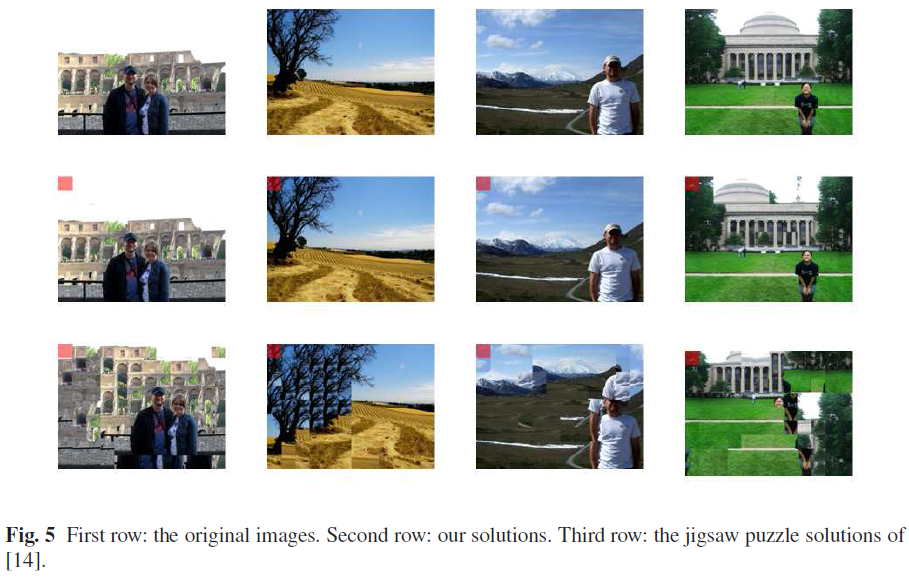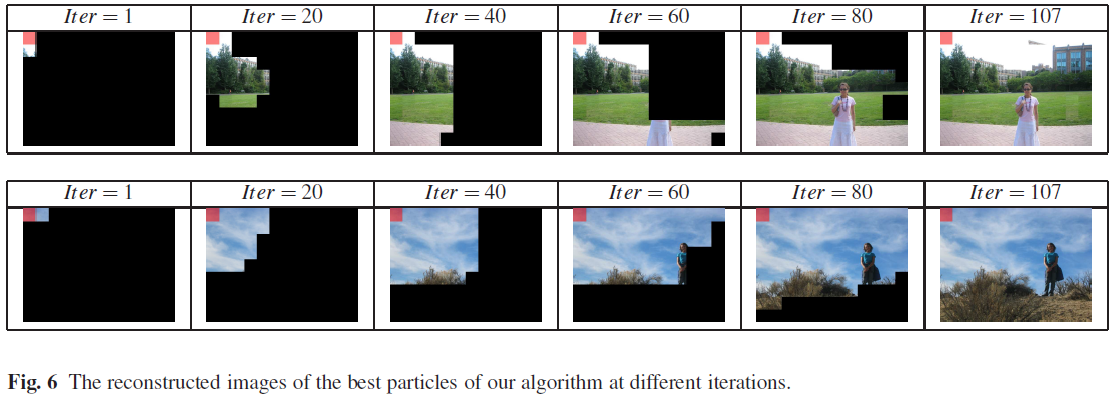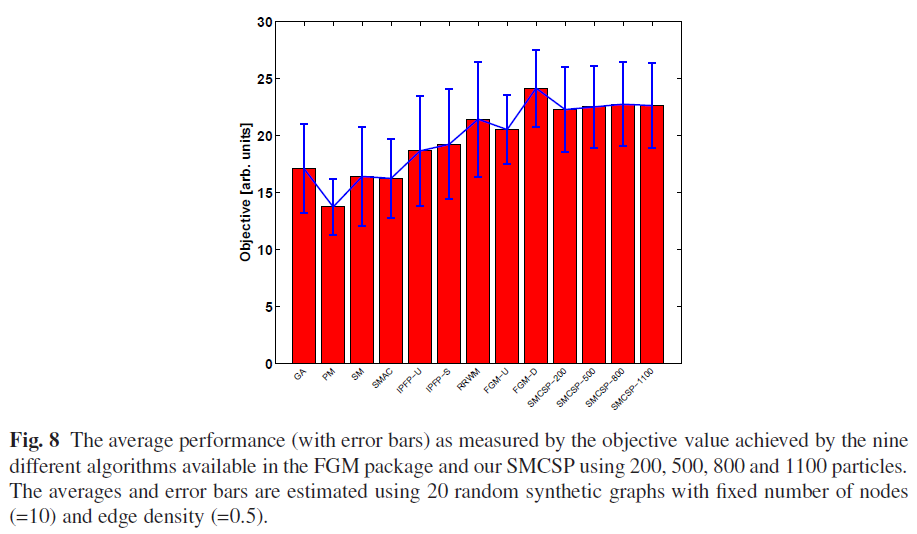Sequential Monte Carlo for Maximum Weight Subgraphs with Application to Solving
Image Jigsaw Puzzles
Authors: Nagesh
Adluru, Xingwei Yang, Longin Jan Latecki
Email-ids: nagesh.adluru@gmail.com (Waisman Center), happyyxw@gmail.com (Amazon), latecki@temple.edu (Temple University)
Basic overview:
We consider a problem of finding maximum weight subgraphs (MWS) that
satisfy hard constraints in a weighted graph. The constraints specify the graph nodes
that must belong to the solution as well as mutual exclusions of graph nodes, i.e.,
pairs of nodes that cannot belong to the same solution. Our main contribution is a
novel inference approach for solving this problem in a sequential monte carlo (SMC)
sampling framework. Usually in an SMC framework there is a natural ordering of the
states of the samples. The order typically depends on observations about the states or
on the annealing setup used. In many applications (e.g., image jigsaw puzzle
problems),
all observations (e.g., puzzle pieces) are given at once and it is hard to define a
natural ordering. Therefore, we relax the assumption of having ordered observations
about states and propose a novel SMC algorithm for obtaining maximum a posteriori
(MAP) estimate of a high-dimensional posterior distribution. This is achieved by exploring
different orders of states and selecting the most informative permutations in
each step of the sampling. Our experimental results demonstrate that the proposed
inference
framework significantly outperforms loopy belief propagation in solving the
image jigsaw puzzle problem. In particular, our inference quadruples the accuracy of
the puzzle assembly compared to that of loopy belief propagation.
Sample Results:




Scripts and paper download
Jigsaw puzzle experiments
Synthetic experiments
Paper
[14] Cho, T.S., Avidan, S., Freeman, W.T.: A probabilistic image jigsaw puzzle solver. In: CVPR (2010).



